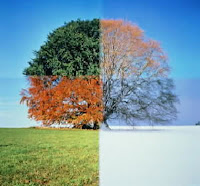In this assignment we were asked to firstly read The Image by Roland Barthes. As stated by Jonathan this was quite hard to understand so I found it easier to understand with the notes which were provided. Polysemy is basically something which has multiple meanings, such as images- they can mean different things to different people and in different situations. Say text was added to an image- you would probably have a different more focused meaning to the image therefore having a better understanding of what the image was trying to say in it. In The Image by Roland Barthes he suggests that there are three types of messages: the linguistic message, the coded message and the non-encoded message.
- Linguistic message- An image with text which gives a greater understanding of what the image is trying to tell the viewer by using text.
- The coded message- Symbolic meaning which is only understood to those who have certain cultural knowledge.
- The non-encoded message- everyone can understand just by viewing an image.
In this assignment I will get a greater understanding of what this theory is about and put it into action to see if it really works.
Firstly I got into a group with 3 other individuals to discuss the chapter which we read and like most others in my group we found this hard to understand but discussing it helped a great deal. We also discussed how this theory could work within our discipline- interior design. I feel that as we are creating different environments to cater for different individuals needs that interior designers have to incorporate this into the work to succeed in designing a relevant space.
ASSIGNMENT 2B
For my groups experiment we firstly selected 3 images:
For my groups experiment we firstly selected 3 images:
ASSIGNMENT 2C
We then asked a selection of people what there thoughts were towards the images. Many just described what they thought was going on in the images such as the fire image which could be a camp fire whilst others had a more symbolic approach to the images- seeing the fire as a sign of danger. After they had analysed all the images they were then to make up a story which links all the images together, they were allowed to put the images in their own sequence. Quite a few of the volunteers came up with a similar story- looking at the hotness and coldness of the images and describing it to the weather. After we got around 7 peoples stories we then selected one story which to take forward into our next stage of the experiment. This was the one which was chosen-
"flames being the summer months, tunnel showing timeline between the summer to the picture of the winter pond ie. winter months".
ASSIGNMENT 2D
We then had to pick a fourth image to add to our others and the trick was trying to get people to make up similar or the same stories as the one above.
This task ended up being quite challenging and although many people were thinking about the seasons, many were getting confused when shown the spiral walkway image as they were unsure of what it was, so their stories ended up being quite different to what we were hoping for.
ASSIGNMENT 2E
Next we were to add text to one of the images. For this we decided to add the words "the cycle" to the spiral walkway image to see if the volunteers would understand this image better. This seemed to work very well and the majority of people got very similar stories such as this one:
"This reminds me of how the seasons are just a continuous cycle ranging from the very warm to the very cold. From the heat of the summer to the cold frost in winter time."
I feel that our experiment has agreed with Barthes as many people were coming up with different stories before the text was put in. Once the text was put in place this helped people coming up with similar if not the same stories. I feel that my understanding of polysemy has improved by doing this experiment as I now understand how we are very influenced by text when it is added to an image to explain something in the right context and also how different people have different opinions when looking at an image it is only when you add more meaning such as text that the meaning is "fixed" to one particular purpose.




No comments:
Post a Comment